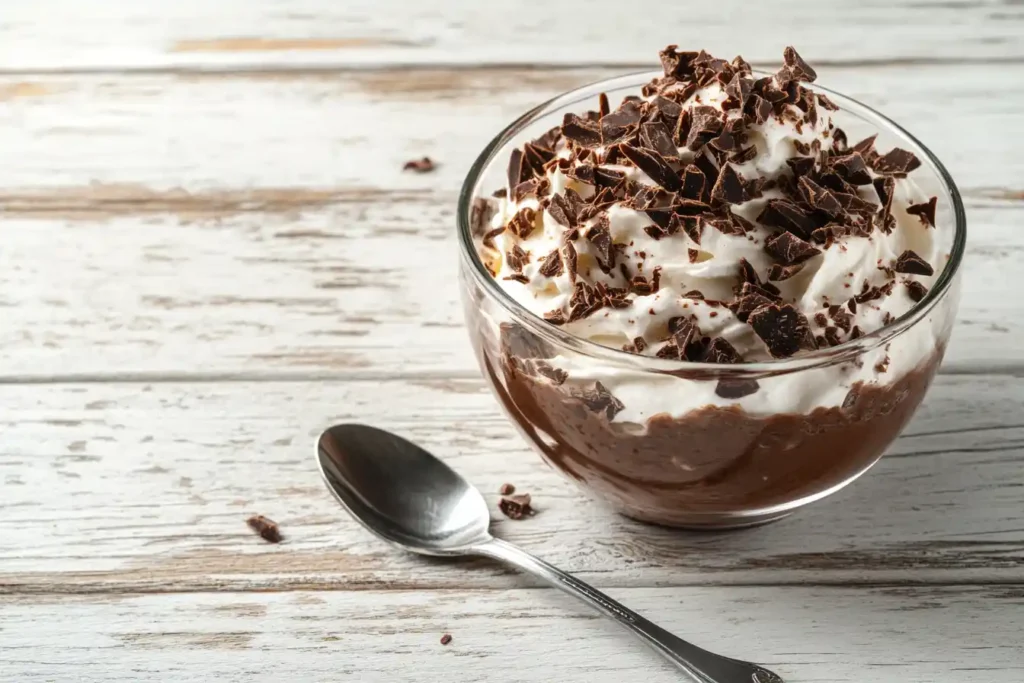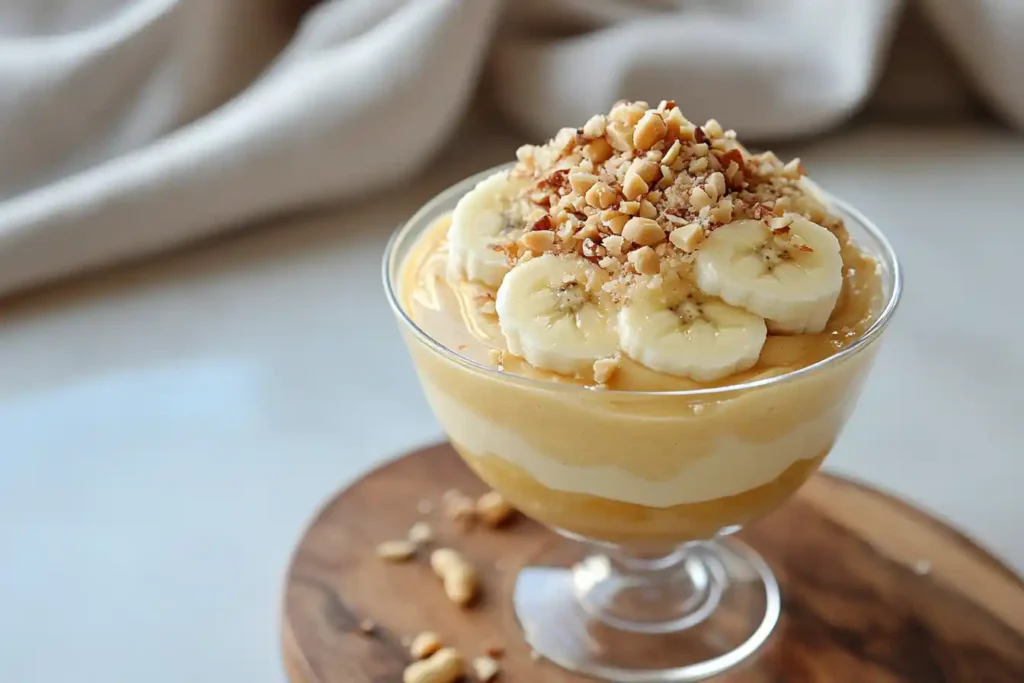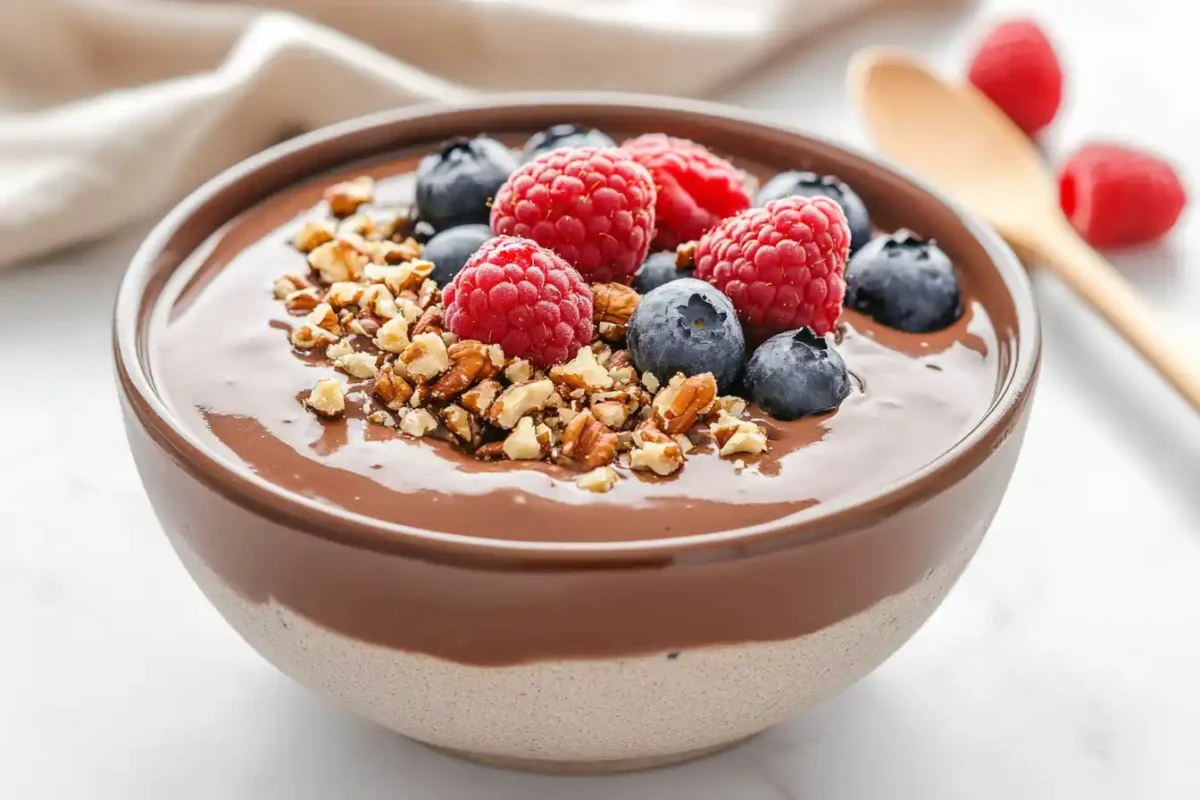Introduction and Background
Can I Use a Protein Shake Instead of Milk for Pudding?
If you’re wondering whether it’s possible to use a protein shake instead of milk in pudding, the answer is a resounding yes! But why should you even consider this substitution? With dietary preferences shifting toward more protein-rich and low-calorie options, protein shakes are becoming a go-to ingredient in everyday recipes. They bring not just nutrition but also convenience to the table.
Why Substitute Milk in Pudding?
Traditional pudding recipes often rely on milk for their rich, creamy texture, but there are plenty of reasons to make a switch. For one, many people are lactose intolerant or prefer to cut back on dairy for personal or health reasons. Moreover, protein shakes can amplify the nutritional value of pudding, transforming it from a sugary treat into a satisfying and protein-packed snack.
Using a protein shake also allows you to experiment with exciting flavors, from chocolate to vanilla almond, that complement the pudding mix beautifully. And let’s not forget—it’s perfect for fitness enthusiasts seeking high-protein options for post-workout recovery.
Understanding the Ingredients and Compatibility
What Is a Protein Shake?
A protein shake isn’t just a drink for bodybuilders; it’s a versatile and nutrient-rich alternative to traditional milk. At its core, a protein shake is a liquid blend containing a protein source such as whey, casein, or plant-based options like pea or soy. These shakes are often enriched with vitamins, minerals, and flavors, making them an excellent ingredient for recipes.
Different types of protein shakes suit various needs. Whey and casein are ideal for a creamy texture, while plant-based options like almond or coconut protein shakes work well for vegan or dairy-free puddings. Their diverse flavors—ranging from chocolate and vanilla to exotic blends like salted caramel—make them a fun way to customize your pudding’s taste.
How Does Milk Function in Pudding?
Milk is the backbone of many pudding recipes, playing a key role in achieving the right texture and consistency. Its natural fats and proteins bind with the pudding mix, creating that smooth, luscious result we all love. Different types of milk, like whole, skim, or almond milk, offer varying thickness and flavor.
When substituting milk with a protein shake, it’s essential to understand how the shake’s composition affects the final product. Protein shakes generally have a higher viscosity than milk and may include additional sweeteners or stabilizers, which can alter the pudding’s taste and texture. But don’t worry—these differences often lead to pleasant surprises!
Are Protein Shakes a Good Alternative to Milk?
Absolutely, though it depends on your goals and taste preferences. Using a protein shake instead of milk introduces a significant boost in protein content, which can help with muscle recovery and satiety. It also brings more flavors to the table, enhancing the overall pudding experience.
However, some challenges arise, like achieving the perfect texture. Protein shakes can make the pudding slightly thicker or give it a distinct flavor profile. Experimentation is key here, and adjusting the ratios or adding a splash of water can often resolve consistency issues.
Up next, we’ll dive into the nitty-gritty of substituting protein shakes in pudding recipes and share step-by-step instructions to get it just right!
Practical Guide to Using Protein Shakes in Pudding
How to Substitute Protein Shake for Milk in Pudding
Swapping milk for a protein shake in pudding may seem tricky at first, but with the right approach, it’s simple and rewarding. Here’s a step-by-step guide to ensure a smooth and creamy result:
- Choose the Right Protein Shake:
Select a shake flavor that complements your pudding mix. Chocolate protein shake works well with chocolate pudding, while vanilla shake pairs beautifully with almost any flavor. - Adjust the Ratio:
Protein shakes are often thicker than milk, so you may need slightly less shake than the recipe calls for. For example, if the recipe suggests 2 cups of milk, start with 1¾ cups of shake and add more if needed. - Mix Gradually:
Begin by adding the protein shake slowly to the pudding mix, whisking continuously to avoid clumps. This method ensures even mixing and a smoother texture. - Test for Consistency:
Check the pudding’s texture as it sets. If it feels too thick, add a splash of water or another liquid to balance it out. - Refrigerate for Best Results:
Allow the pudding to chill in the fridge for at least two hours. This step helps the flavors meld and the pudding firm up perfectly.
Popular Pudding Recipes Using Protein Shakes
Looking to spice up your pudding game? Here are a few tried-and-true recipes where protein shakes shine.
- Chocolate Protein Pudding:
Use a chocolate protein shake, mix with chocolate pudding powder, and top with dark chocolate shavings and a dollop of Greek yogurt for an indulgent treat.

- Vanilla Almond Protein Pudding:
Combine vanilla protein shake with almond pudding mix, and garnish with toasted almonds and a drizzle of honey. A creamy and nutty delight! - Banana Peanut Butter Protein Pudding:
Blend banana pudding mix with a peanut butter protein shake, and top with banana slices and crushed peanuts for a sweet, protein-rich dessert.

Tips for Customizing Your Protein Pudding
Making protein shake pudding isn’t just about following recipes—it’s also about personalizing it to your liking. Here are some tips to take it up a notch:
- Add Toppings:
Sprinkle granola, fresh berries, or chopped nuts for a crunchy texture and extra nutrients. - Control Sweetness:
If your protein shake is already sweetened, you might want to reduce the sugar in the pudding mix. For a healthier option, opt for natural sweeteners like stevia or honey. - Boost the Flavor:
A dash of cinnamon, a splash of vanilla extract, or even a pinch of sea salt can enhance the overall taste and balance the flavors.
Now that you know how to master protein shake pudding, let’s explore its benefits and drawbacks to help you decide if this substitution suits your lifestyle!
Benefits and Drawbacks of Using Protein Shakes
Advantages of Protein Shakes in Pudding
Switching milk for a protein shake in pudding isn’t just about novelty; it comes with a host of benefits:
- Boosts Protein Intake:
Pudding made with a protein shake transforms into a high-protein snack or dessert. It’s perfect for those looking to increase their daily protein intake without consuming extra supplements separately. - Customizable Flavors:
Protein shakes come in a variety of flavors like chocolate, vanilla, caramel, and even cookies and cream. This variety allows you to infuse your pudding with creative and delicious tastes. - Diet-Friendly and Convenient:
Protein pudding works well for fitness enthusiasts, as it aligns with low-carb, keto, or high-protein diets. Plus, it’s quick and easy to make, saving time during meal prep. - Healthier Alternative:
By using a protein shake, you cut down on the fat and calories often found in whole milk, making it a lighter option for health-conscious individuals.
Potential Drawbacks to Consider
While protein shakes offer numerous advantages, there are a few drawbacks to be mindful of:
- Flavor Compatibility Issues:
Some protein shake flavors may overpower the pudding mix, leading to an unusual or overly strong taste. Experimenting with flavor combinations is key to avoiding this. - Texture Adjustments:
Protein shakes are often thicker than milk, which can affect the pudding’s consistency. Adding water or tweaking the ratio can solve this, but it may require trial and error. - Cost Differences:
High-quality protein shakes tend to be more expensive than traditional milk. For those on a tight budget, this could be a consideration.
Comparing Nutritional Values: Milk vs. Protein Shakes
Let’s break down the nutritional comparison between milk and protein shakes to understand their impact on your pudding:
| Nutrient | Whole Milk (1 cup) | Protein Shake (1 cup) |
|---|---|---|
| Calories | ~150 | ~120-200 (varies by brand) |
| Protein | 8g | 20-30g |
| Fats | 8g | 1-5g |
| Carbohydrates | 12g | 2-10g |
While milk offers balanced nutrition, protein shakes excel in delivering higher protein content and often fewer carbohydrates, making them a great choice for health-conscious individuals.
Expert Opinions and Alternatives
Expert Tips for Best Results
Switching milk for a protein shake in pudding is a popular idea, and experts have some handy advice to ensure success:
- Choose the Right Brand:
Nutritionists often recommend protein shakes with minimal additives and natural sweeteners. These work better in recipes and deliver a clean flavor. - Flavor Pairing is Key:
Chefs suggest balancing flavors to avoid overpowering the pudding. For instance, a rich chocolate shake pairs beautifully with chocolate or vanilla pudding, while fruit-flavored shakes may complement lighter pudding mixes. - Mind the Consistency:
Fitness trainers highlight that protein shakes tend to be thicker than milk. Adjust the liquid content to achieve the smooth texture pudding requires. - Start Small:
If it’s your first time trying protein shake pudding, experts recommend making a small batch to perfect your recipe before scaling up.
Other Dairy Alternatives to Milk for Pudding
While protein shakes are a fantastic option, there are other alternatives worth exploring, especially for those seeking non-dairy options:
- Almond Milk:
A light, nutty-flavored alternative that works well in most pudding recipes. It’s low in calories and widely available. - Oat Milk:
Known for its creamy texture, oat milk is an excellent option for creating rich, dairy-free puddings. - Soy Milk:
Packed with protein and a neutral taste, soy milk is a versatile substitute. - Coconut Milk:
For a tropical twist, coconut milk adds a subtle sweetness and creaminess that enhances certain pudding flavors.
Comparing Alternatives to Protein Shakes
Here’s how some common alternatives stack up against protein shakes:
| Alternative | Protein Content (1 cup) | Best Use Cases |
|---|---|---|
| Almond Milk | 1g | Light puddings or fruit-based recipes |
| Oat Milk | 3g | Creamy, rich pudding textures |
| Soy Milk | 7g | Protein-packed, neutral-flavored recipes |
| Coconut Milk | 5g | Exotic, dessert-style puddings |
| Protein Shakes | 20-30g | High-protein, fitness-friendly desserts |
By understanding these alternatives, you can choose the one that best fits your dietary needs and flavor preferences.
In the next section, we’ll answer frequently asked questions about protein shakes in pudding to address common concerns and provide clarity!
Frequently Asked Questions Section
Yes, most protein shakes can be used to make pudding, but the type of shake you choose matters. Whey, casein, or plant-based options like almond or soy protein shakes all work well. The key is to pick a flavor that complements your pudding mix. For example, chocolate protein shakes pair perfectly with chocolate or vanilla pudding. Avoid shakes with overly artificial or strong flavors unless they align with your recipe.
Yes, using a protein shake instead of milk can slightly change the pudding’s texture. Protein shakes are often thicker than milk, resulting in a denser consistency. However, this can be balanced by adjusting the amount of shake or adding a small amount of water to thin the mixture. With proper adjustments, you can achieve a creamy, smooth pudding texture.
In many cases, yes! Protein shakes typically have more protein and fewer fats and carbohydrates than regular milk, making them a healthier option, especially for fitness enthusiasts or those on a high-protein diet. Additionally, protein shakes often include added vitamins and minerals, boosting the nutritional value of your pudding.
Absolutely! Plant-based protein shakes like soy, almond, or pea protein shakes are excellent for pudding recipes, especially for those following a vegan or dairy-free diet. These shakes provide a creamy texture and unique flavor profiles while delivering the necessary protein.
If your pudding turns out thinner than expected, you can thicken it by using less protein shake or adding a thickening agent. Cornstarch or gelatin works wonders to improve the texture. Another tip is to refrigerate the pudding longer, as chilling helps it set and thicken naturally.
Conclusion and Call-to-Action
Final Thoughts on Using Protein Shakes in Pudding
Substituting milk with a protein shake in pudding is more than just a culinary experiment—it’s a creative way to turn a classic dessert into a healthy, protein-packed treat. From fitness enthusiasts seeking post-workout snacks to those exploring lactose-free options, this substitution caters to various dietary needs and preferences. With a wide range of flavors and nutritional benefits, protein shakes offer endless possibilities for customizing your pudding.
That said, every new recipe comes with its challenges, such as adjusting the texture or balancing the flavors. But don’t let that discourage you! By following the tips and recipes shared here, you’ll be well on your way to creating puddings that are as delicious as they are nutritious.
Call to Action
Ready to transform your favorite pudding recipe? Grab your preferred protein shake, pick a pudding mix, and start experimenting today! Whether you’re aiming for a rich chocolate dessert, a fruity delight, or a simple vanilla treat, the possibilities are endless.
It’s time to rethink pudding—one protein shake at a time!

